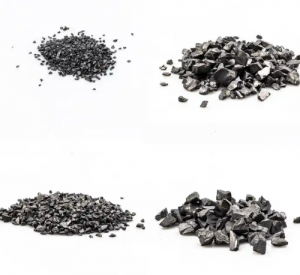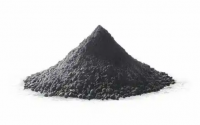Refractory Metals: Applications and Innovations
Introduction
In the vast realm of materials science, a select group of metals holds a distinct position. They possess exceptional resilience, durability, and high melting points. These refractory metals play a pivotal role across industries and facilitate innovations in technology, engineering, and beyond.
This article is going to have a detailed discussion about their features and uses. Hope that you can have a better understanding.

Unveiling the Refractory Metals
Refractory metals encompass a group of elements: tungsten, molybdenum, niobium, tantalum, and rhenium. They can endure extreme temperatures without losing their structural integrity. Tungsten, renowned for its highest melting point among metals, stands prominently among these materials. Alongside tungsten, metals like molybdenum, tantalum, niobium, rhenium, and osmium complete this exclusive cohort.
Some other exceptional properties set refractory metals apart in the realm of materials science. These metals exhibit impressive mechanical strength and hardness. These features are coupled with superb resistance to corrosion and wear. Additionally, their low thermal expansion and high density contribute to their suitability in aerospace, electronics, and high-tech manufacturing.
Related reading: Top 10 Common Refractory Metals You Can Find Now
1. Aerospace Advancements
One of the primary domains benefitting from refractory metals is aerospace engineering. There is a large demand for materials capable of withstanding intense heat and stress. Therefore, these metals are integrated into jet engines, rocket propulsion systems, and spacecraft components. Such components ensure operational efficiency and safety in extreme conditions.
2. High-Tech Manufacturing
In the realm of high-tech manufacturing, refractory metals serve as indispensable components. The electronics industry harnesses their conductivity and heat-resistant properties. They created thin films for semiconductors and transistors. Tantalum capacitors are known for their reliability and stability. They are ubiquitous in electronic devices, from smartphones to medical equipment.
3. Medical Marvels
Refractory metals have made significant inroads in medical applications. These metals have biocompatibility, resistance to corrosion, and non-reactive nature with bodily fluids. They are ideal for implants and medical instruments. They find widespread use in orthopedic implants, dental implants, and surgical instruments due to their strength, low density, and excellent corrosion resistance.
4. Energy Innovations
Refractory metals play a vital role in the advancements in renewable energy technologies. Tungsten and molybdenum are pivotal in manufacturing components for solar panels and wind turbines. This contributes to the expansion of clean energy initiatives globally. Their ability to withstand harsh environmental conditions ensures the longevity and efficiency of these energy systems.
Emerging Frontiers
The applications of refractory metals continue to evolve and venture into cutting-edge technologies. Additive manufacturing, notably 3D printing, has opened new vistas for these metals. With the help of refractory metals, 3D printing allows intricate designs and precise fabrication of components for aerospace, healthcare, and various industries. Additionally, advancements in nanotechnology leverage the unique properties of refractory metals. So, they can develop nanomaterials with diverse applications, from catalysis to energy storage.
Challenges and Future Prospects
Despite their exceptional properties, challenges persist in working with refractory metals. Their high melting points pose manufacturing complexities, and the cost associated with extraction and processing remains a concern. However, ongoing research endeavors aim to address these challenges. They explore innovative techniques and alloys to optimize their properties and production efficiency.
Looking ahead, the future of refractory metals appears promising. Advancements in alloy development, surface coatings, and nanomaterials hold the potential to further enhance their functionality and expand their applications across industries. As technology continues to advance, the versatility and reliability of refractory metals are poised to play an increasingly pivotal role in shaping the landscapes of aerospace, manufacturing, medicine, energy, and beyond.
Conclusion
The realm of materials science owes a debt to the remarkable properties of refractory metals. Their heat resistance, durability, and versatility have positioned them as indispensable materials across diverse fields. As research and development persist, these metals will continue to spearhead transformative advancements. They serve as the cornerstone of modern technological progress.
Advanced Refractory Metals (ARM) has been a prominent manufacturer and supplier of top-tier refractory metals like Tungsten, Molybdenum, Tantalum, Rhenium, Titanium, and Zirconium since 1994. We have expertise in metallurgical practices and a keen understanding of customer needs. For more information, please check our homepage.
Related Posts

Methods to Improve the Recovery Rate of Molybdenum

Common Types of Molybdenum Wires and Their Uses

